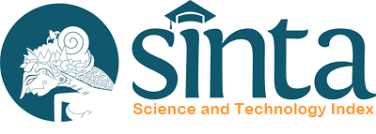Can ISO 38200:2018 Wood and Wood Based Product Chain of Custody Increase Businesss Competitiveness of Wood Industries in West Java ?
DOI:
https://doi.org/10.24259/jhm.v11i2.8358Keywords:
Chain of Custody, ISO 32800, 2018, Business CompetitivenessAbstract
The purpose of this study was to determine the effect of the implementation of new standard ISO 38200:2018 to business performance and competitiveness for wood industries in west java. This research was conducted in several companies that use woods as raw material in west java of Indonesia with 180 respondents of companies that have plan to implement the ISO 38200:2018. The research background is due to lack of research on the benefits of ISO 38200:2018 in wood companies in West Java Province of Indonesia. The data collection was carried out by distributing electronic questionnaires on september until november 2019 and analyzing data processing use Structural Equation Model (SEM) and software Linear Structural Model (LISREL) version 8.70. The results of analysis show that the implementation of ISO 38200:2018 has significantly influenced business performance and competitiveness such as increase customer satisfaction index, increase sales, increase productivity and safety and employee satisfaction.
References
Ahmad, M. F., Yusran, Y., & Mas’ud, E. I. (2017). Penilaian Aspek Hukum Tata Kelola Hutan Tanaman Rakyat di Kabupaten Barru. Jurnal Hutan dan Masyarakat. Vol, 9(1), 8-16.
Baccini, A., Goetz, S.J., Walker, W.S. (2012). Estimated carbon dioxide emissions
from tropical deforestation improved by carbon-density maps. Nat Clim Change.
https://doi.org/10.1038/NCLIMATE1354
Brown, H.C, Lassoie, J.P., (2010). Institutional choice and local legitimacy in community-
based forest management: lessons from Cameroon. Environ Conserv 37, 261–269.
Brown, M.I.(2013). Redeeming REDD: Policies, Incentives and Social Feasibility For
Avoided Deforestation. Earthscan, London.
Fujita, K. and Shaw, R. (2010), "Chapter 7 Forest management as an adaptation option in mountain areas
Harris, N.L., Brown, S., Hagen, S.C., Saatchi, S.S., Petrova, S., (2012). Baseline map of
carbon emissions from deforestation in tropical regions. Science 336, 1573–1576.
Hirschberger, Peter (2005): The Effects of FSC-certification in Latvia: an analysis of CARs. WWF Forest Programme.29 p. http://www.panda.org/downloads/forests/fscanalysislatvia.pdf (as of June 2008)
Lee, D., Llopis, P., Waterworth, R., Roberts, G., Pearson, T.(2018). Approaches to REDD+Nesting : Lessons Learned from Country Experiences. World Bank, Washington, DC.
Lewis, R.A., Davis, S.R.(2015). Forest certification, institutional capacity, and learning: an
analysis of the impacts of the Malaysian Timber Certification Scheme. For. Pol. Econ.
, 18–26. Maletz, O., Tysiachniouk,
Newsom, Deanna and Hewitt, Daphne (2005): The Global Impacts of SmartWood Certification. Final Report ofthe TREES Program for the Rainforest Alliance. http://www.rainforestalliance.
org/programs/forestry/perspectives/documents/sw_impacts.pdf (as of June 2008)
Pinto, L.F.G., McDermott, C.L., (2013). Equity and forest certification – a case study in Brazil. For. Pol. Econ. 30, 23–29.
Renström, Margareta and Rainey, Margaret (WWF Sweden) (2001): Social issues and the Forestry StewardshipCouncil. Sustainable Development International 4,137–139. http://www.p2pays.org/ref/40/39769.pdf (as ofJune 2008)160 Ros-Tonen, Mirjam
Purwanto, A., Asbari, M., & Santoso, P.(2019).Pengaruh Kompetensi, Motivasi, Kepemimpinan, Komitmen dan Budaya Kerja Sistem Manajemen Integrasi ISO 9001, ISO 14000 dan ISO 45001 Pada Industri Otomotif. Jurnal Produktivitas Universitas Muhammadiyah Pontianak, 6(2),158-166. DOI: http://dx.doi.org/10.29406/jpr.v6i2.1798
Purwanto, A., Asbari, M., & Santoso, P.(2019). Does Culture, Motivation, Competence, Leadership,
Commitment Influence Quality Performance?. Jurnal Inovasi Bisnis, 6(2), 201-205. DOI: https://doi.org/10.35314/inovbiz.v7i2.1210
Purwanto, A., Asbari, M., & Santoso, P.(2019).Influence of Transformational and Transactional Leadership Style toward Food Safety Management System ISO 22000:2018 Performance of Food Industry in Pati Central Java. Jurnal Inovasi Bisnis, 6(2), 180-185. DOI: https://doi.org/10.35314/inovbiz.v7i2.1213
Purwanto, A., Sihite, B.O.,Yanthy, E., Hutagalung, L. (2019). Influence of Forest Management System FSC, PEFC and ISO 38200:2018 Toward Business Performance at Wood and Paper Industries in Sumatera Indonesia, Saudi Journal of Business and Management Studies, 4(12). 892-897. DOI: http://10.36348/sjbms.2019.v04i12.005
Santoso, P, Purwanto, A., & Asbari, M.(2019). Influence of Implementation Chain of Custody Forest Management System FSC-STD-40-004 V3-0 to Business Performance of Paper Industriesia in Banten Indonesia, International Journal of Management and Humanities (IJMH), 4(4), 32-36. DOI: https://doi.org/10.35940/ijmh.C0442D0482.124419
Sunderlin, W.D., Angelsen, A., Belcher, B., Burgers, P., Nasi, R., et al., (2005). Livelihoods,
forests, and conservation in developing countries: an overview. World Dev. 33,
–1402.
Sunderlin, W.D., Hatcher, J., Liddle, M., (2008). From Exclusion to Ownership? Challenges and Opportunities
Sloan, S., Sayer, J.A., (2015). Forest Resources Assessment of 2015 shows positive global
trends but forest loss and degradation persist in poor tropical countries. For. Ecol.
Manage. 352, 134–145.
Sills, E.O., Atmadja, S.S., de Sassi, C., Duchelle, A.E., Kweka, D.L., Resosudarmo, I.A.P.,Sunderlin, W.D. (Eds.), (2014). REDD+ On the Ground: a Case Book of Sub-national Initiatives Across the Globe. CIFOR, Bogor, Indonesia
Tysiachniouk, Maria (2005): Forest Certification in Russia. (Center for Independent Social Research St. Petersburg,Russia); Paper presented at Yale Forest Certification Symposium. published by Yale school of forestry &environmental studies.http://www.yale.edu/forestcertification/symposium/pdfs/Book%20Chapters/12%20Russia.pdf (as of June 2008)
Williams, Gavin (2004) "Structural Equation Modeling Methods In Strategy Research: Application and Issue” Research Methodology in Strategy and Management (Research Methodology in Strategy and Management, Vol. 1), Emerald Group Publishing Limited, Bingley, pp. 303-346. https://doi.org/10.1016/S1479-8387(04)01111-7












